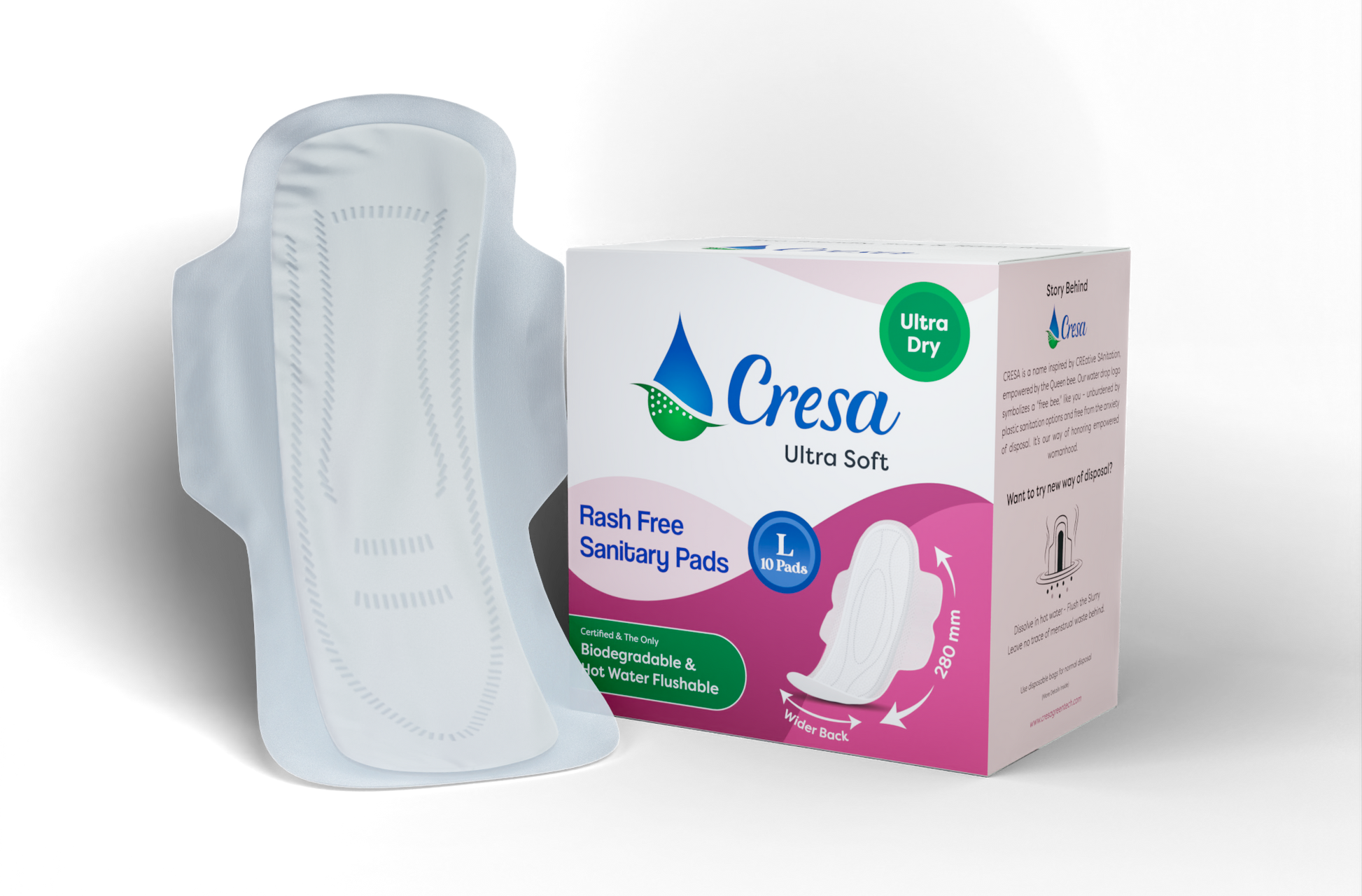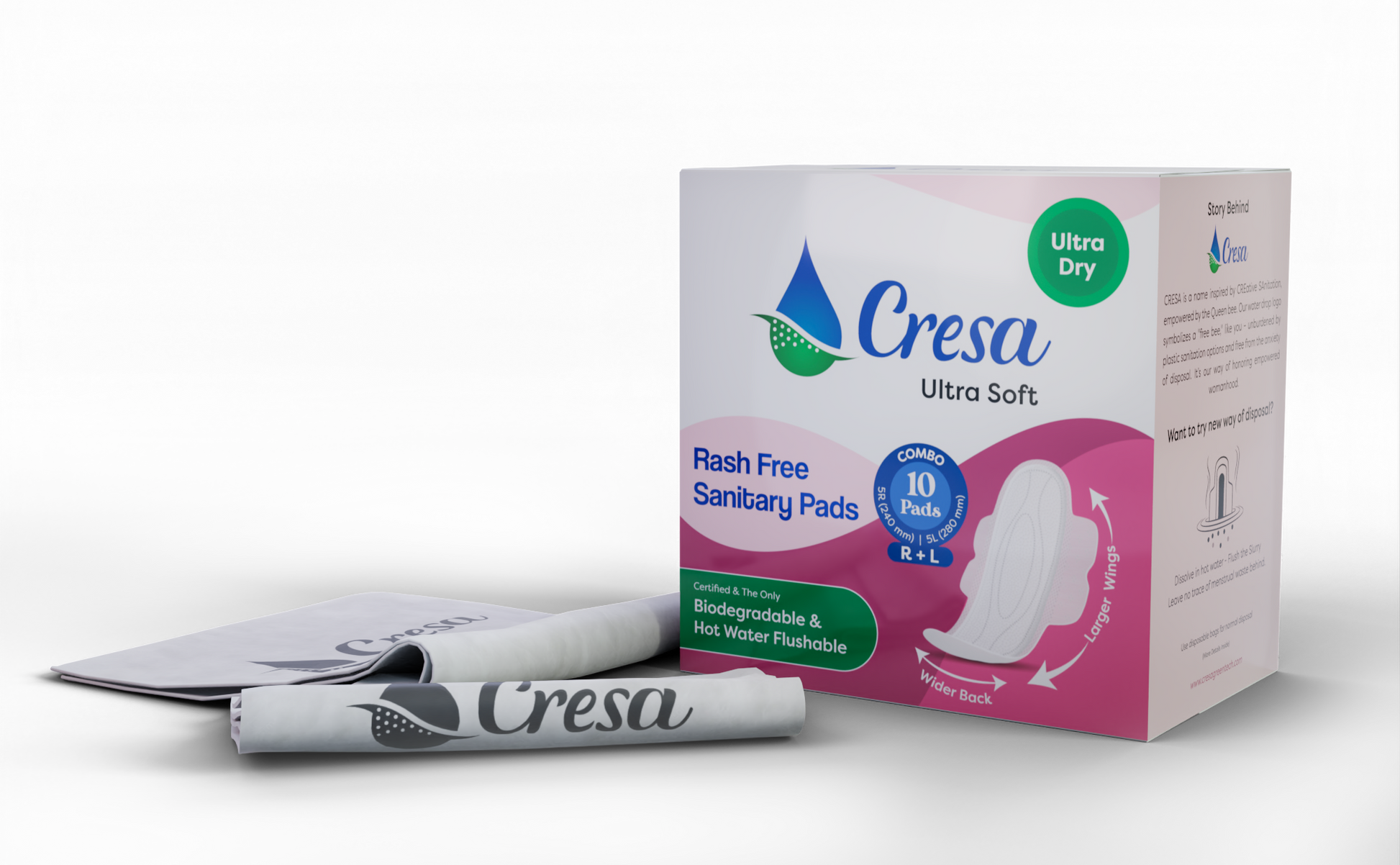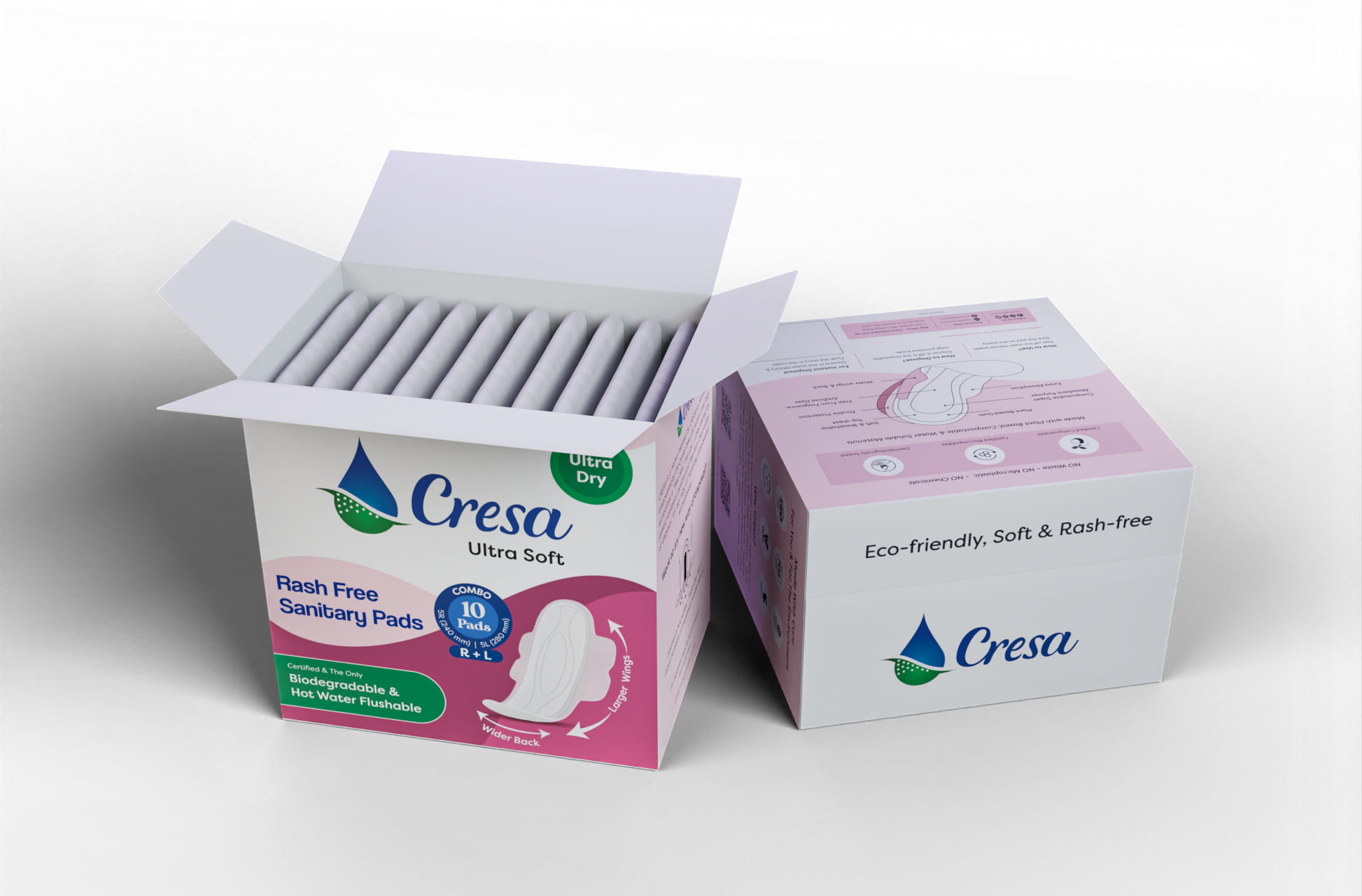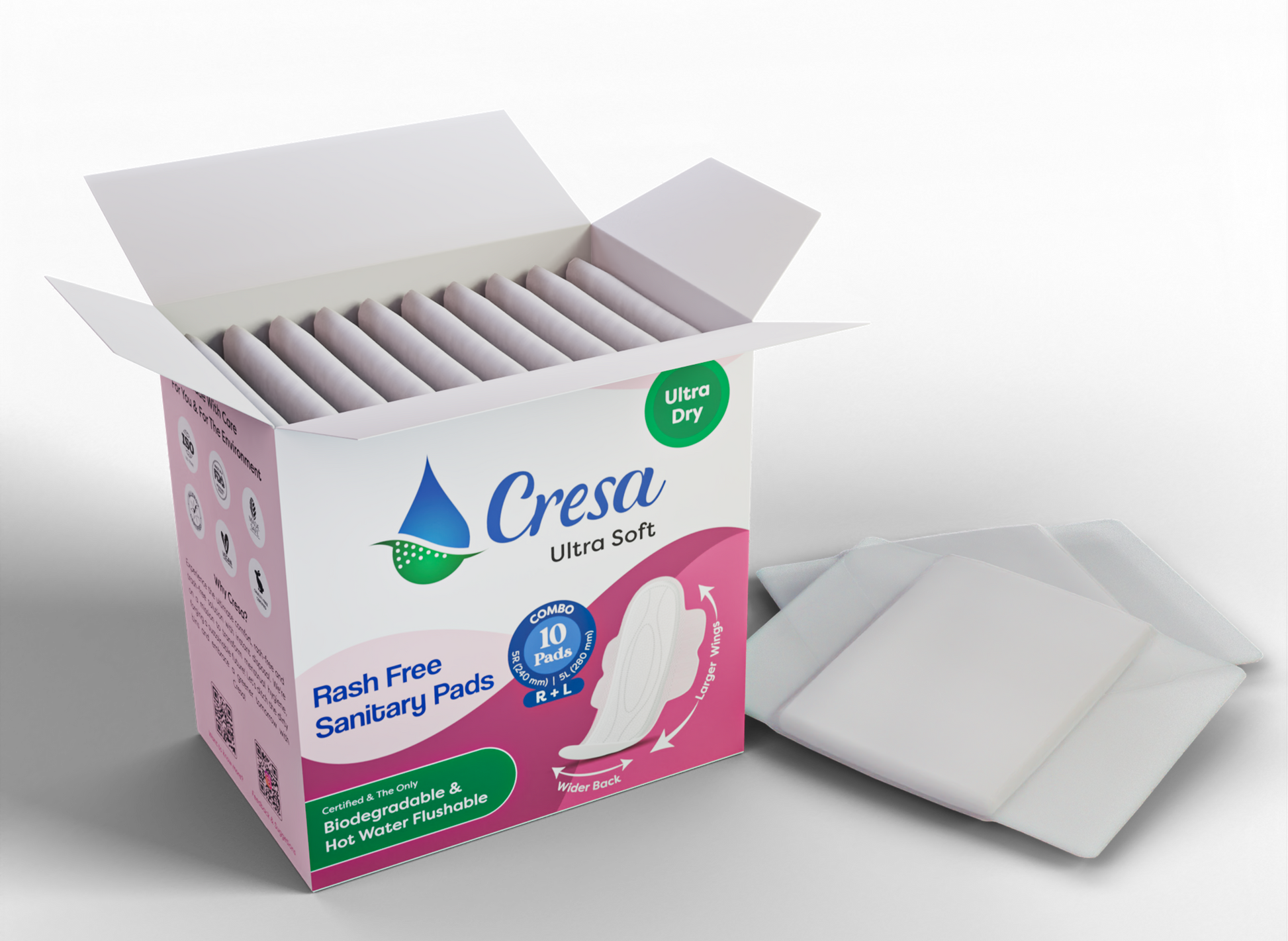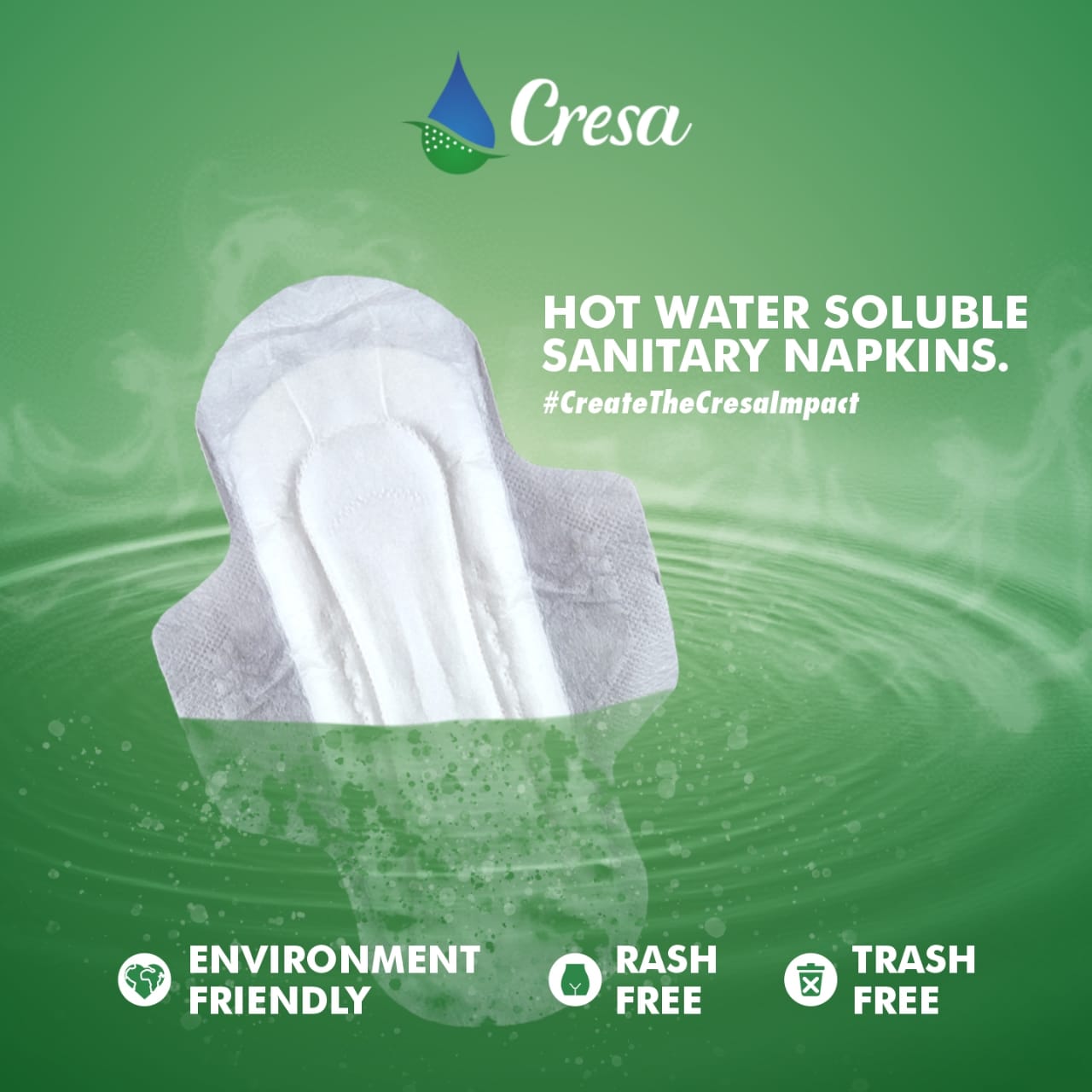Unlike ordinary pads that consist of 90% toxic substances and plastics, Cresa pads are made using super soft topsheet, permeable backsheet, and biodegradable water-soluble components. Our Cresa sanitary pads focus on bringing innovation in current menstrual hygiene products leaving behind no waste, no microplastic, and no worry of disposal and solving a huge environmental issue.
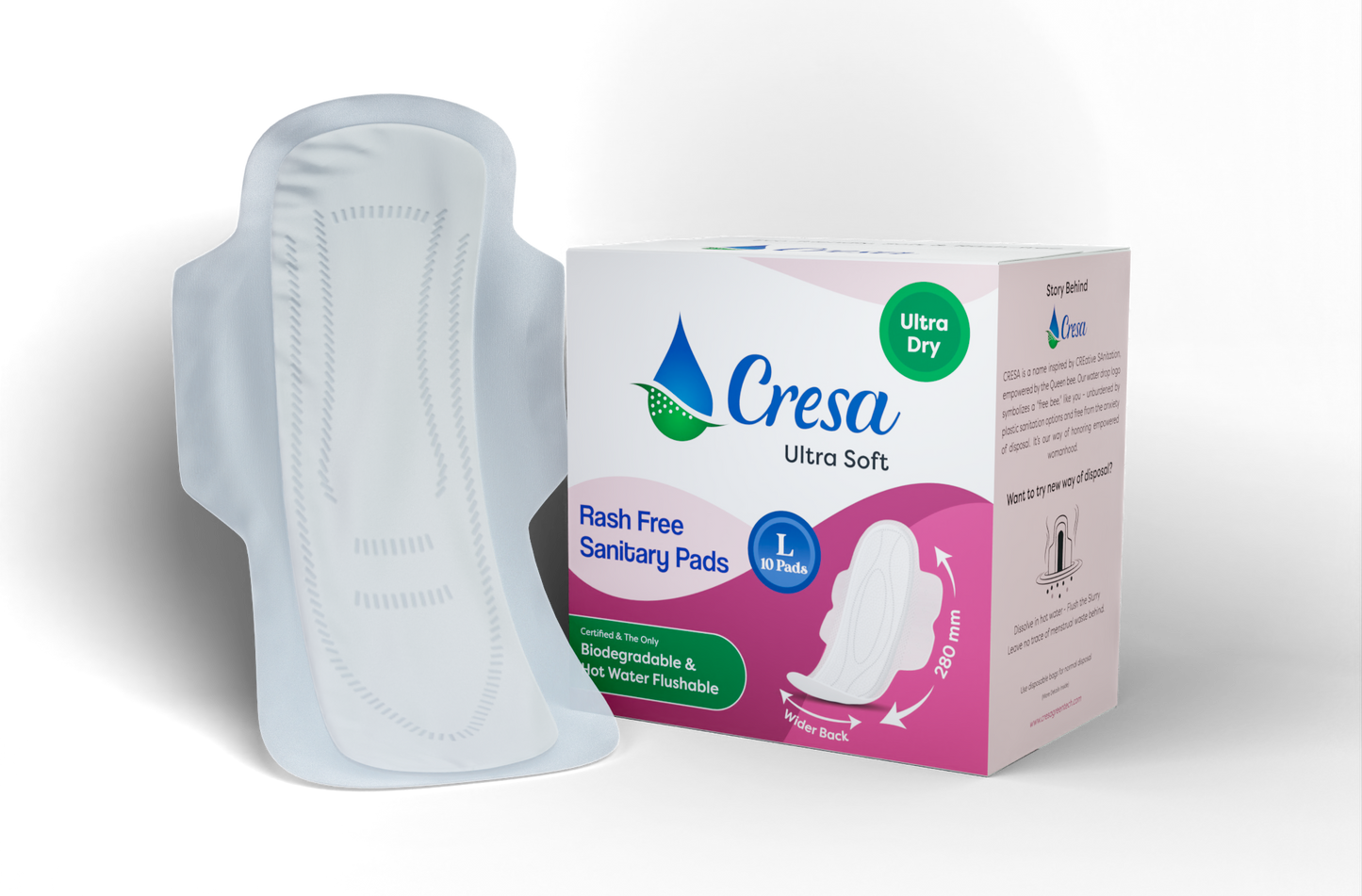
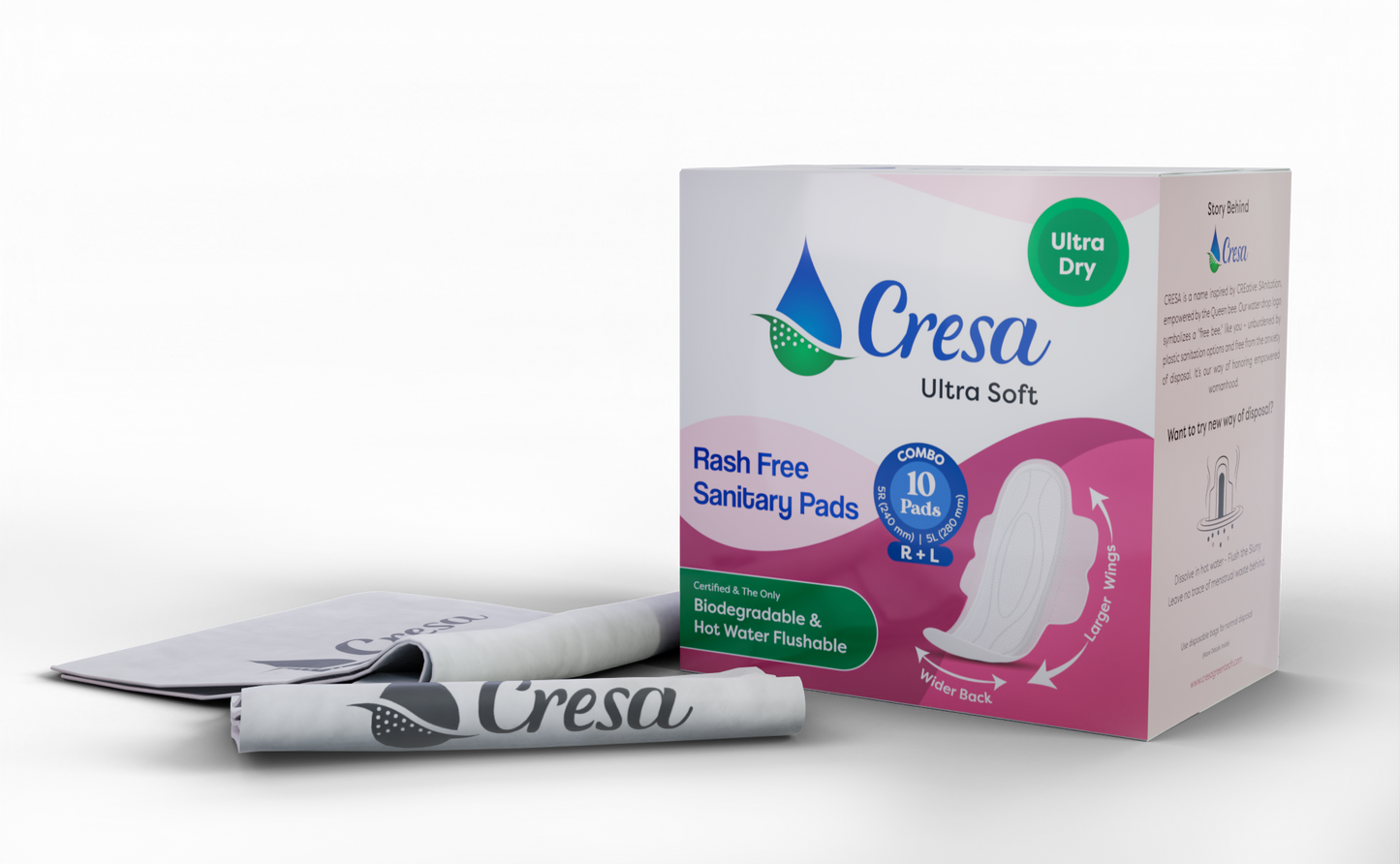
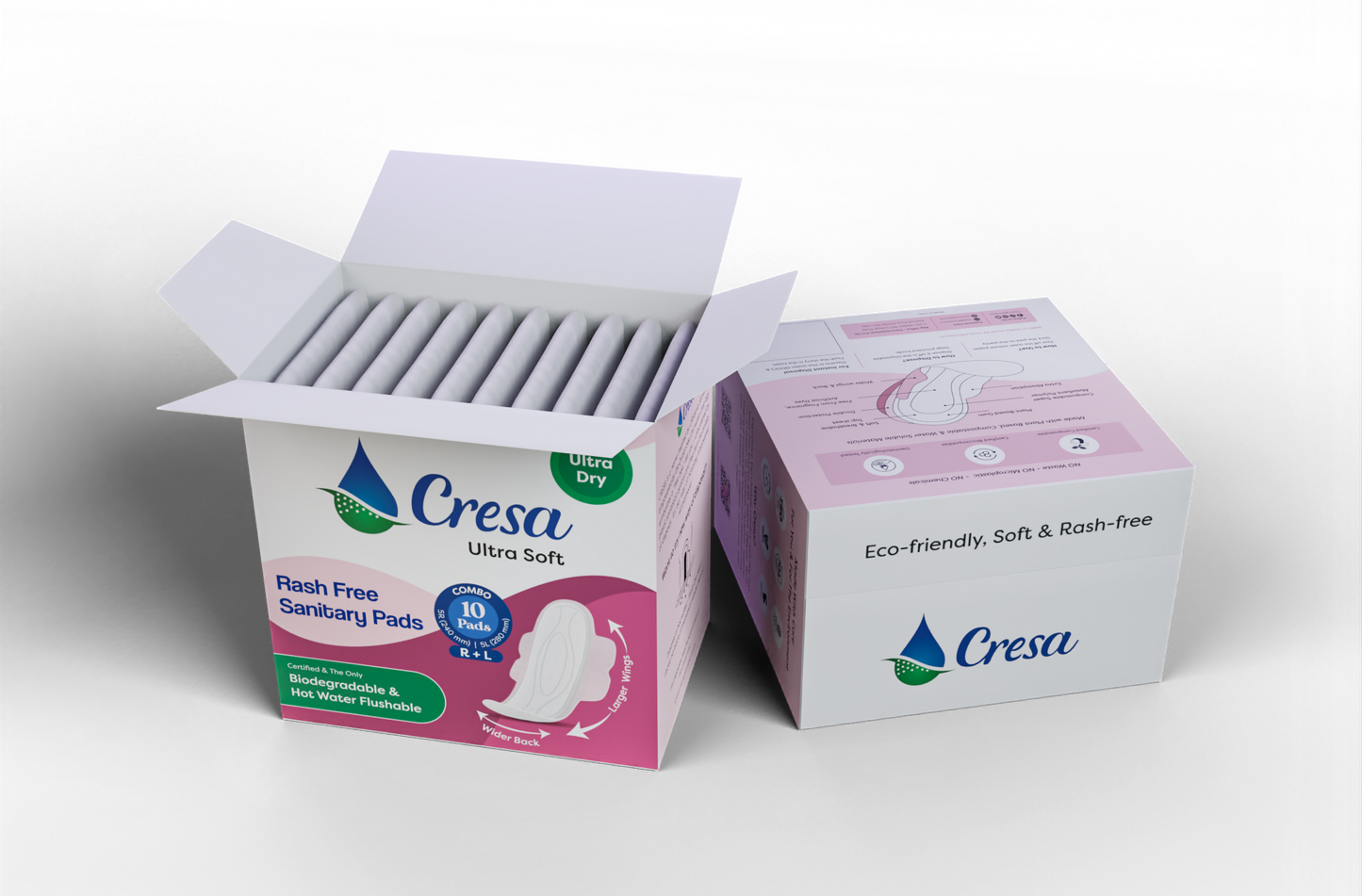
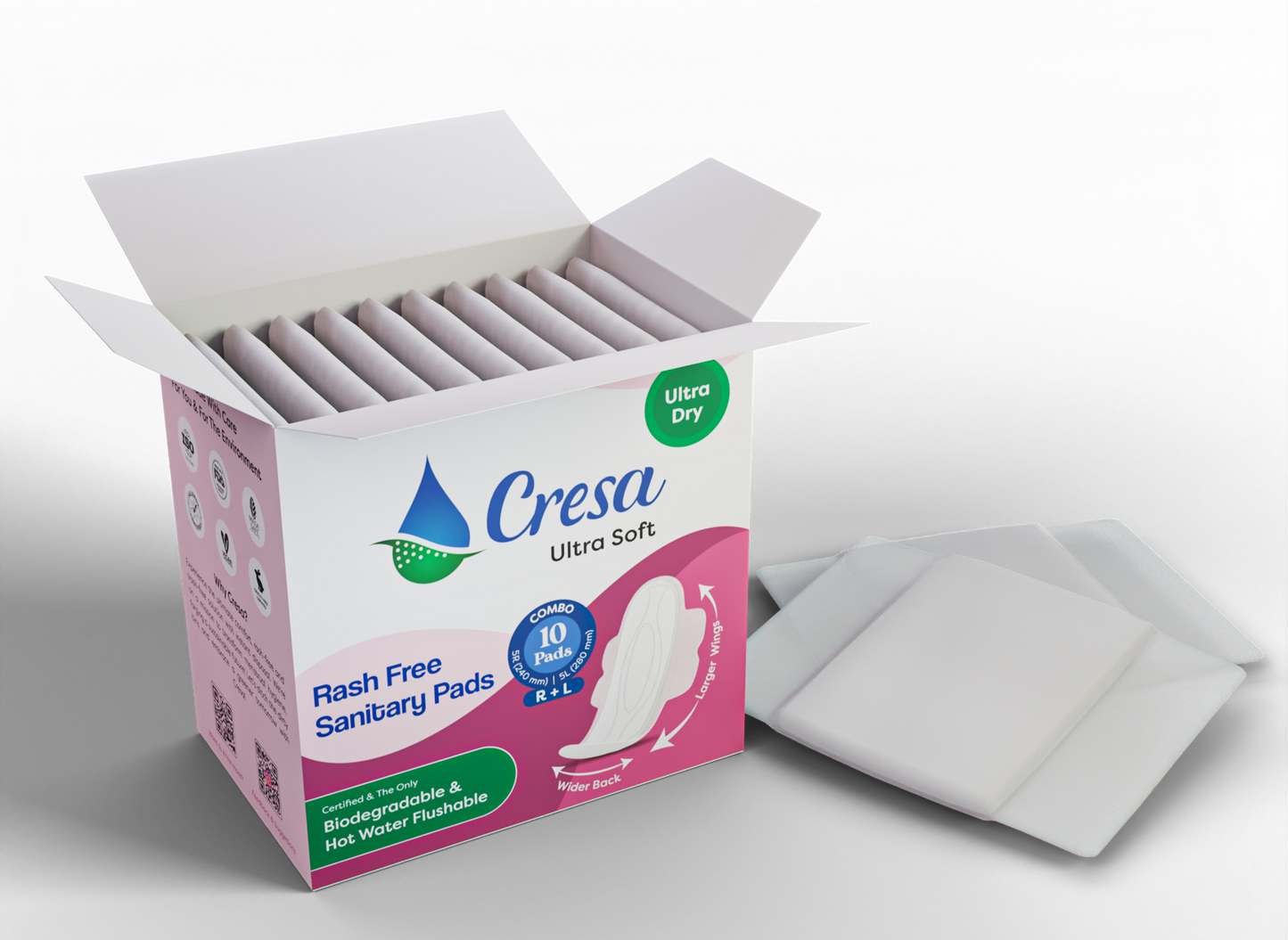
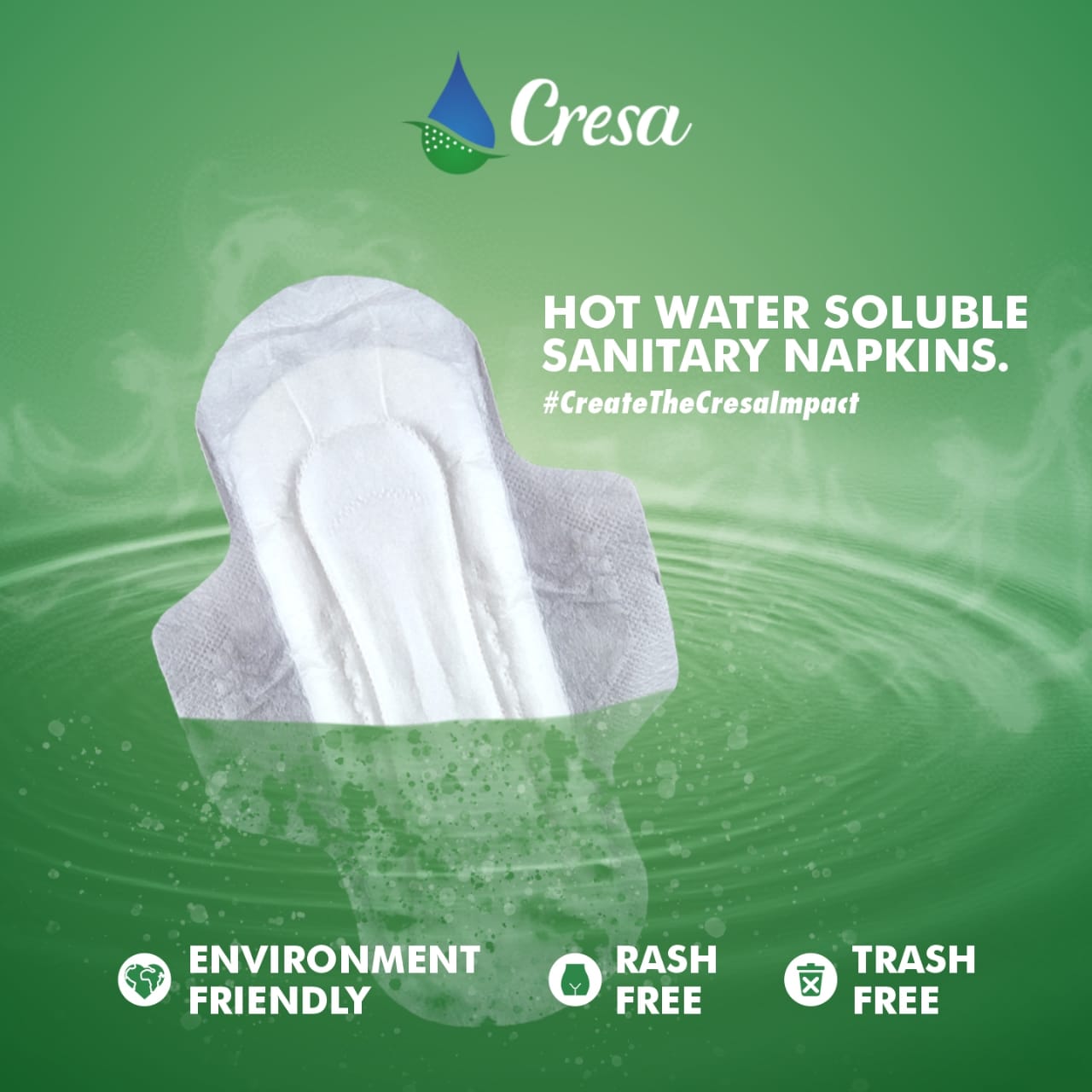
Frequently Asked Questions
What makes Cresa pads unique?
How do Cresa pads help reduce skin rashes and discomfort?
Most conventional pads contain polypropylene, polyethylene, artificial fragrances, deodorants, dyes, chlorine bleach, latex, parabens, dioxins, chloroform, and more which makes you uncomfortable and your skin itchy. Whereas, Cresa pads use bio-based absorbent powder sheet that locks in blood and gives complete protection. This unique combination makes it super soft, and comfortable and gives the best user experience.
How do I dissolve Cresa pads?
You can dissolve Cresa pads by pouring hot water on used pads in a mug or vessel and then throwing the slurry in the toilet and flushing it. But remember, the water should be very hot - around 75 to 80 degrees Celsius! At this temperature, the outer layers get dissolve, and the internal absorbent core gets dispersed.
How often should I change the Cresa pad?
Well, it is recommended to change your sanitary pads after every 4 to 6 hours.
Is flushing the Cresa pads better than binning like ordinary pads?
Flushing the Cresa pad guarantees that the product will disappear in about one month due to treatment at the wastewater plants. If you’re binning any product, it will end up in landfills or get incinerated which pollutes the environment. Thus, we suggest flushing them instead of binning them.
How will your pads reduce pollution from the ecosystem?
The materials used for producing Cresa pads are fully biodegradable and water dispersible. Once the pad is exposed to hot water, the slurry is formed which disintegrates by the time it reaches your local municipal plant. Thus, no pollution is caused to the ecosystem.

